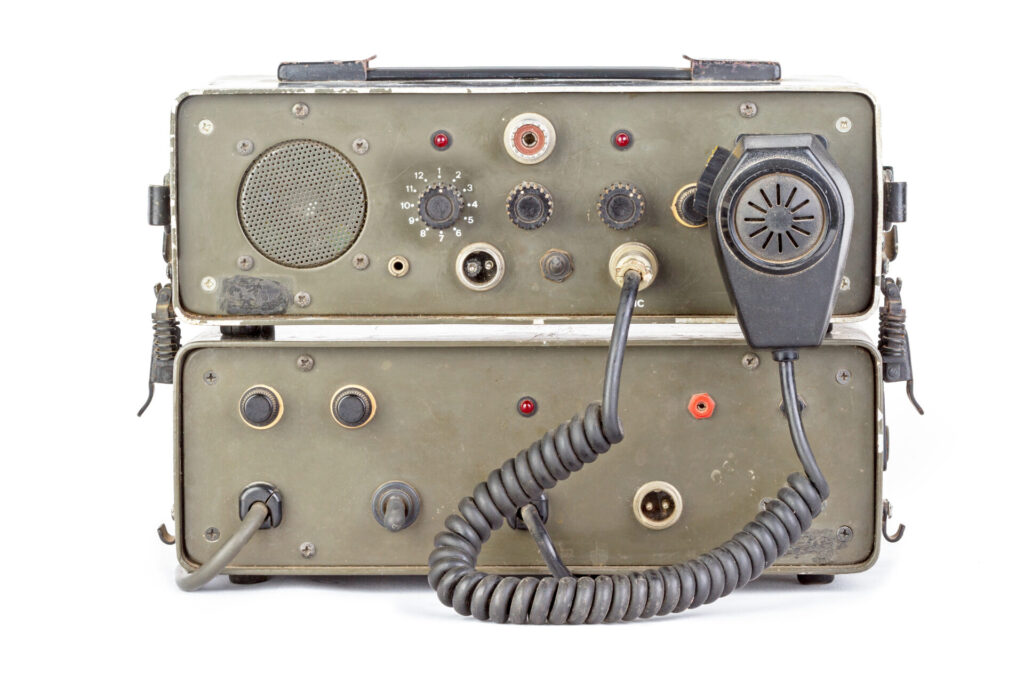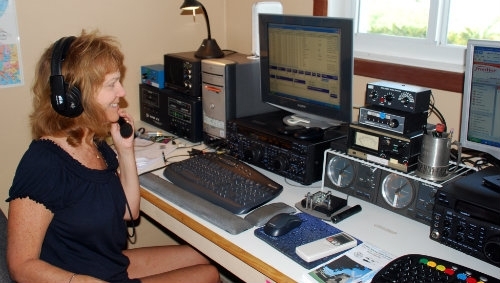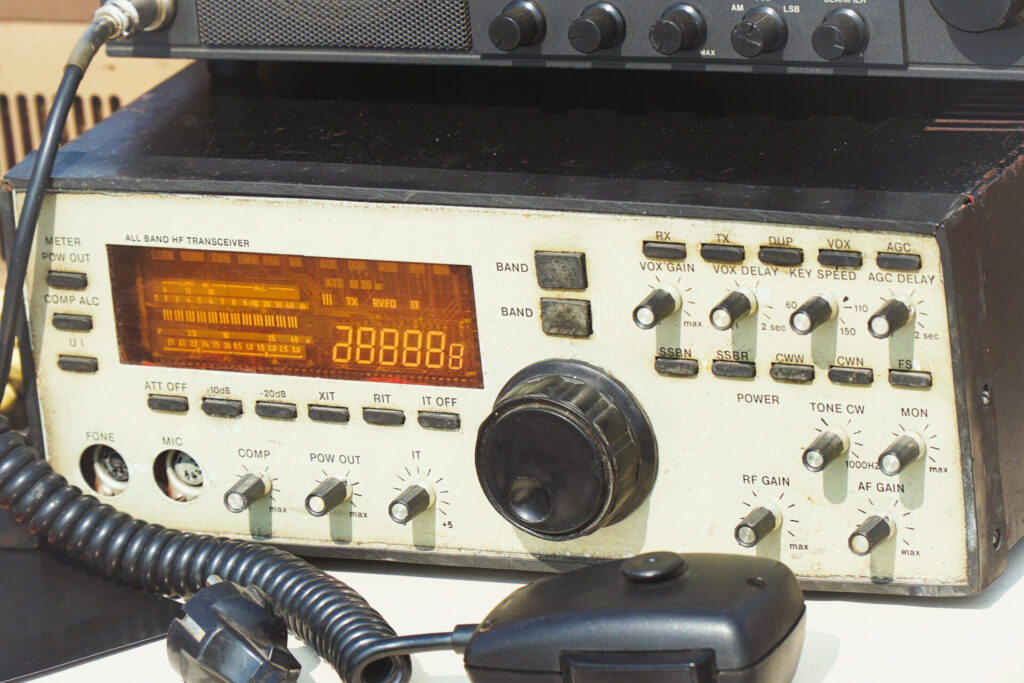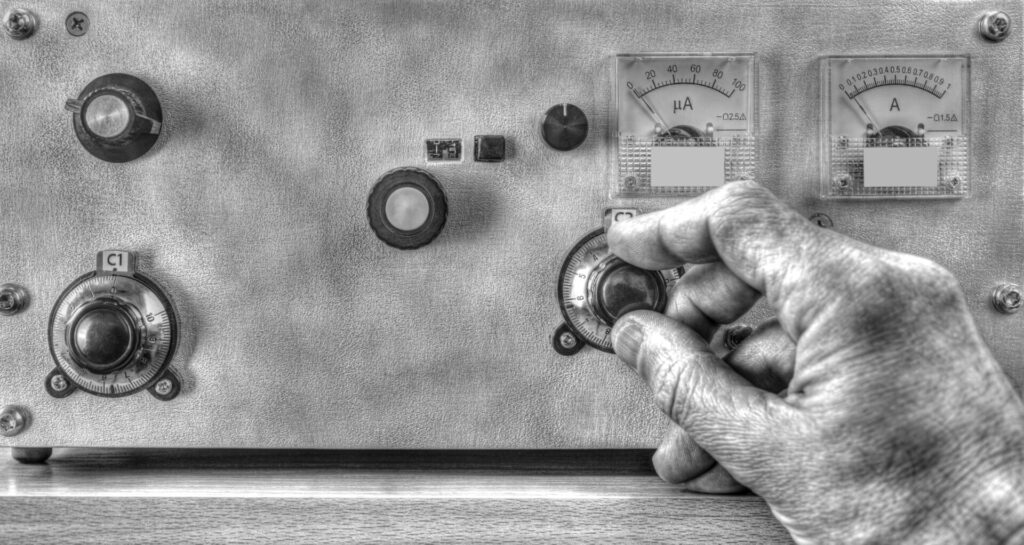Learn about ham radio and how we still depend on this early wireless technology around the world. You can even make your own!

Ever watch the Stranger Things series on Netflix? It’s not just a great show with Stephen King-like paranormal activity wrapped up in an idealistic 80s town. It also features some excellent electronic technology that was at its prime back in the 80s that is still kicking today.
In one scene, three kids are sitting around their very first ham radio with their science teacher in tow. For these kids, ham radio was the equivalent of today’s smartphones or wireless internet, and allowed them to communicate with others around the world with no wires in between! For Dustin, Mike, and Lucas, ham radio was like a gateway into an invisible dimension, and an alien one, allowing them to connect wirelessly with some simple electronic components.
What will it be about for you? Perhaps a great opportunity to learn about basic electronics! Let’s find out.
The basics of ham radio

For those interested in wireless technology and tinkering, ham radio provides a solid introduction to basic electronics theory and radio communications knowledge. Once you’re fully equipped with the needed equipment, the world is yours to communicate and connect with.
You likely know about ham radio for one of its most vital uses, serving as a reliable communication system when disaster strikes. During times of crisis, our fragile cellular networks and power grids limp along. But ham radio keeps on running. We rely on this wireless technology as the sole method of communication during emergency situations. Volunteer-based emergency groups offer their radio expertise to coordinate aid and relief assistance for those in their community.
Ham radio uses
The uses for ham radio extend far beyond emergency situations though. Take, for example, the International Space Station (ISS). An astronaut traveling on board will typically bring a 1-5 watt handheld ham radio with them. By holding the radio to the window, which positions its antenna in the line of sight with other radios down on earth, a lone astronaut flying through space can chat with people on the ground. Outside of space adventures and emergency situations, we also use ham radio for:
- Moon bouncing: As if bouncing radio waves off of our ionosphere to lengthen the distance of our communications isn’t enough. Some ham radio operators get their kicks by bouncing radio waves off of the moon to communicate with others around the world.
- Distance dialing: Other ham operators take part in contests to see how many hams they can connect with in distant locations. Don’t be surprised to get a postcard back when you make contact; this can make for a great collection throughout the years.
- Digital data: Ham radios aren’t just for voice communications. With some newer transmission technologies, you can also send digital signals around the world. You can share things like pictures without ever needing wireless internet.
Of course, this list is by no means exhaustive. The uses for ham radio are only limited by your imagination. Ham radio enthusiasts are all known for their nature of being tinkerers and inventors. So whether you want to dive deep into wireless communications, build up your electronics theory, or experiment with digital signaling, there’s something for every maker in a ham radio hobby.
The ham radio spectrum
Like other wireless technologies, ham radio uses the power of electromagnetic radiation to send voices, Morse code, and digital data around the world with the help of transmitters, receivers, and antennas. This electromagnetic radiation travels in the form of a sinusoidal wave. The particular wavelength and frequency of the wave determine which electromagnetic signal you’re working with. You can break electromagnetic radiation down into a spectrum. It’s categorized in order of decreasing wavelength and increasing frequency to include radio waves, microwaves, infrared, visible light, ultraviolet, x-rays, and gamma rays.

Of these categories, ham radio operates solely in the radio wave spectrum. The radio wave spectrum famously has long wavelengths that can range anywhere from 0.04 inches to over 62 miles! The details get even deeper, though. Radio frequencies then get broken down into yet another spectrum, called the radio frequency spectrum.
This spectrum has been sliced up by the FCC to reserve specific bands of frequencies for specific radio technologies. For example, maritime radio communications operate in the Very Low Frequency (VLF) band, while satellite communications operate in the Extremely High Frequency (EHF) band.
As for ham radio, the FCC has allocated a specific set of frequencies that start at the AM radio band at 1.6 MHz and end at 1240 MHz. This range includes two radio frequency bands, Very High Frequency (VHF), and Ultra High Frequency (UHF). Each has its pros and cons.
Very High Frequency (VHF)
VHF resides on the radio frequency spectrum between 30 to 300MHz, with the particular ham radio band reserved for 144-148MHz. VHF provides a simplex communications system. It allows for line-of-sight communications between two ham radios. This band is highly reliable and less susceptible to noise from nearby electrical equipment. This makes it the band of choice for many ham radio operators.
When communicating in the VHF band, ham radio operators typically take advantage of repeaters set up all around the country by local radio clubs. These large, antenna-like structures can receive and re-broadcast signals sent from a ham radio, which significantly extends its reach. Even better, many of these repeaters are powered by solar or have built-in power backup. This makes them perfect for keeping communications going in times of emergencies.
Ultra High Frequency (UHF)
Moving up the radio frequency spectrum, we have Ultra High Frequencies, which range from 300MHz to 3GHz. For ham radio operators, you’ll use the frequency range from 420 – 450MHz. Unlike the reliability of VHF radio waves, UHF has a much shorter wavelength and is prone to interference from almost any solid object. For example, a building blocking your signal or even your body. On the plus side, UHF does have a higher bandwidth occupation, and a wider frequency range and audio signal quality when communicating on this band.
Hamming over the cash for equipment

If you’re interested in starting a ham radio hobby, there are several options for equipment. If you want to go all about and build an entire ham radio shack, expect to invest hundreds or thousands of dollars to get started.
These days there are some cheaper options out there that allow a maker to get started with a ham radio hobby for as little as $25. A simple BaoFeng transceiver lets you tune in and talk around the world without breaking the bank. This can be a great avenue to get your ham radio license and see if you want to invest further. If you end up wanting to build your own ham radio shack, expect to invest in the following parts:
Receiver
A scanning receiver allows you to listen in on various radio bands. This box comes in either a desktop or hand-held version. Many receivers these days will also have a memory module that allows you to save your favorite frequencies.
Transceiver
You can also invest in a transceiver, which combines both a receiver and transmitter in one box. You’ll typically find these as two-meter, single-band models for basic ham operators. However, if you plan to upgrade your ham license in the future, you can pick up a dual or tri-band transceiver for more communications power.
Antenna
If you have a home or outdoor space, you might want to consider investing in an antenna. These will come as either omnidirectional, which sends out a signal in all directions, or directional, which sends a signal to a direct path. There are also mobile antennas you can install on your car that will give your signal a boost while on the road.
These are just a few of the pieces you’ll need when putting together your own ham radio shack. There’s still a lot more to the project, though, with things like a power supply, microphone, and all necessary cabling. Be sure to check out this fantastic article on how to set up a ham radio shack for more details.
Getting your ham radio license
Ready to get started with your ham radio hobby? Not so fast! You’ll need a license to operate a ham radio legally. The test you take will cover electronics theory, amateur radio rules, and regulations. There are three types of licenses available, including:
- Technician: This license is perfect for those just getting started with their ham radio hobby. The technician test includes 35 questions and will cover basic ham radio regulations, safety, and basic electronics theory. Once complete, you’ll be licensed to communicate in the VHF, UHF, and microwave frequency bands.
- General: With a General license, you’ll unlock all of the privileges of the Technician license plus the ability to communicate on frequencies in the High Frequency (HF) band.
- Extra: The Extra license has over 700 questions and is going to take some serious studying. If you pass this test, you’ll get all of the privileges of both the Technician and General License, plus access to exclusive sub-bands.
To get started with your ham radio license process, you’ll likely want to find a class or book to dig into and then take your test. HamRadio 360 has a great list of study materials for you to start with. Once you know your stuff, you’ll want to look for a local club in your area for a testing session. The National Association for Amateur Radio (ARRL) is a great resource for finding a location in your town.
Start your first radio circuit design using Autodesk Fusion 360 electronics today!
